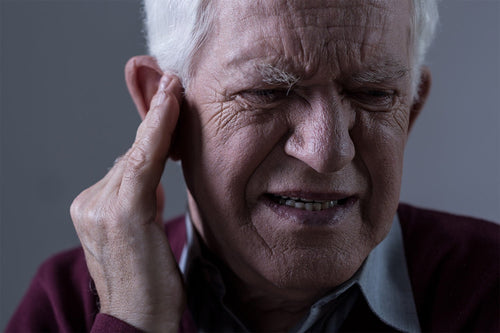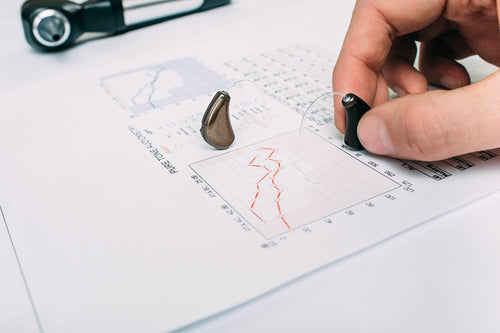Cleaning your ears may sound like an important part of your hygiene regimen, but in actuality, there are only a few circumstances in which you should actually clean your ears. The ears are extremely sensitive structures in the body. The use of cotton swabs and other devices to remove earwax are unnecessary and could pose the potential to cause damage to your ears and eardrum.
If you are surprised that you shouldn’t be sticking things in your ear opening to clean them, you are not alone; it is one of the greatest misconceptions the public has. While earwax is normal and is likely to not cause problems, there are circumstances in which you may need to loosen up or hello things out of your ear canal.
Below are comprehensive instructions on how to properly care for your ears. Understanding the right way to care for your ears can help you to maintain your hearing health for longer and ensure you don’t accidentally do more harm than good.
What Is Earwax?
Earwax is a waxy-like substance that is secreted by the ear glands as a means of keeping the ear canals free of debris. The slightly sticky texture helps to trap foreign particles such as dust, hair, dead skin cells, and other things from reaching the deeper parts of the ear. The wax, also known as cerumen, also has antibacterial and antifungal properties to help fight back against potential infections.
Earwax is constantly produced by the ears. Thanks to this wax’s ability to melt at body temperature, the wax will gradually flow out of the ear all on its own. Additionally, your jaw movements can help earwax move from the inner to the outer ear.
Once it reaches the outer part of your ear, the temperature cools. The wax will harden and flake away.
The Dos and Don’ts of Ear Cleaning

Because of the aforementioned properties of earwax, the best recommendations are to generally leave your ears and earwax alone, but there are instances in which earwax buildup could be a problem, causing discomfort or more.
Below is a closer look at two dos and two don’ts when it comes to cleaning out earwax.
Over-The-Counter Drops
Over-the-counter ear cleaning drops are a great option for those that have a little bit of earwax buildup. This option is considered one of the best because it is safe and easy for anyone at home to utilize effectively.
Many ear wax cleaning drops contain some form of peroxide (like hydrogen peroxide), which, upon contact, releases oxygen. The oxygen and solution help to break down earwax and essentially loosen it up. Simply lay on one side, add as many ear drops as directed, lay still for a couple of minutes, and then turn your ear over onto a paper towel.
While an ear cleaning solution is a great solution for most people, it is not meant for everyone. Those that have had recent ear surgery or perforated eardrum should avoid utilizing these solutions. Additionally, it is not recommended to use if you suspect you may have an ear infection or any other sort of ear problem.
Olive Oil
If you are looking for a more homeopathic remedy, then olive oil may be a good choice for you. While you may think olive oil belongs on your salad and not in your ears, there are a number of people that find great success in clearing out excessive ear wax with the help of olive oil. (Or, you might prefer baby oil or mineral oil.)
Olive oil typically takes a while to work. But, over time, it helps by lubricating the ear canal while simultaneously loosening up and extra ear wax. To get the best results, you should warm the oil to body temperature and place a couple of drops in your ear.
Repeating this for a few weeks can help to eliminate earwax buildup. It can be an excellent option for those looking for something they can do all from the comforts of their own home.
Home Extraction
Earwax extraction videos seem to be all over the internet. While these can seem easy enough, you should never try and attempt this at home. Even if your friend or partner convinces you that they have a steady hand, one misstep could leave you with a perforated eardrum and a trip to the hospital.
Professional extractions utilize a number of different specialty devices like scopes and are all controlled by a professional that is well acquainted with the anatomy of the ear. Buying an at-home wax removal tool is a very dangerous way to remove ear wax and should be avoided altogether.
Ear Candle
Ear candles are another definite don’t when it comes to cleaning your ears. Ear Wax cleaning candle kits claim to help by sucking the wax out of your ear. These claims are unsubstantiated and have been proven ineffective. In fact, the FDA strongly advises against their use due to their false claims and the increased risk of potential injury.
Ear Wax cleaning candles are long hollow wax cylinders that are placed in the ear and then lit above the person’s head. This open flame in close proximity to the face can be dangerous. It honestly sounds more like something a professional fire-breathing performer would partake in than an at-home remedy.
How To Avoid Earwax Buildup
So the best thing you can do for your ears is to leave them alone, but how do you prevent earwax from building up in the first place and requiring you to clean it out?
Below is a closer look at some of the specific steps you can take to avoid earwax buildup and allow them to be the self-cleansing organs they were always meant to be.
Clean Your In-Ear Headphones or Hearing Aids
One common cause of earwax buildup is a buildup of earwax from in-ear headphones or hearing aids. When you think about it, these devices block the entrance to the ear entirely, which blocks the natural outward flow of earwax outside of the ear.
Instead, the earwax gets lodged in these devices. Then, the next time you put them in, you could be pushing hardened earwax into deeper parts of your ear.
A great habit of getting into is to start cleaning these in-ear devices on a routine basis to keep them clean and free of wax. Routine cleanings of hearing aids or headphones will help to prevent earwax buildup and potentially subsequent blockage.
An added bonus of this routine maintenance is that these devices will last longer and most likely retain their optimal audio quality.
Let Your Ears Breathe
Along a similar vein of cleaning in-ear devices, you should allow time in the day for your ears to be completely unobstructed to allow them to do their job and naturally expel earwax. There are many people that wear headphones or hearing aids for far too long. This can cause a buildup of moisture and wax in the ear canal.
For hearing aid users, plug in your rechargeable hearing aids like the EV3 overnight. This allows you to have a full charge the next morning while also giving your ears ample time to breathe and expel wax.
Preventative Cleaning
While most people have ears that are completely capable of self-cleaning, some people may have a predisposition to ear canal blockages due to a small ear canal or an excess production of cerumen, leading to cerumen impaction.
If your doctor identifies you as one of those individuals, doing routine solution cleanings or in-office cleanings can help to avoid a complete earwax impaction.
When To Get Professional Help?

While earwax is typically something that can be managed with a little persistence, sometimes an earwax blockage can be large enough that it will require professional assistance to remove.
Once an earwax blockage covers the entire canal, an individual may experience symptoms of hearing loss and muffled sounds that can impede their day-to-day life. Some of these might include a feeling of fullness in your ears, dizziness, and more.
If you feel that you are starting to hear sounds a little less clearly, you should try and schedule an appointment with your primary care doctor. In the exam, they can look into your ear.
If it is indeed obstructed, they can refer you to a specialist that will carefully and safely remove the compacted earwax blockage. The procedure can allow you to reverse the hearing loss.
In addition to hearing loss, an ear canal blockage can also contribute to earaches and infections since the blockage can retain moisture. If you are at any point concerned about your ears due to pain, loss of hearing, or discharge, you should seek medical help. Hearing is an important sense, and doing everything you can to retain its health will allow you a higher quality of life for longer.
Comfort and Care
In most cases, earwax is completely safe and has no need to be removed. Only when there are excessive amounts of earwax should you take steps to clean it out. Over-the-counter solution and olive oil are two at-home options that can help to remove excess earwax.
Other things like earwax extractors, cotton swabs, and ear candles should be avoided as they either increase the likelihood of damage or are ineffective. Perhaps the best and most effective method to manage excess earwax is preventing its formation altogether. Take the necessary preventative steps, such as cleaning listening devices and letting your ears breathe.
Sources
Antibacterial and antifungal properties of human cerumen | NCBI













